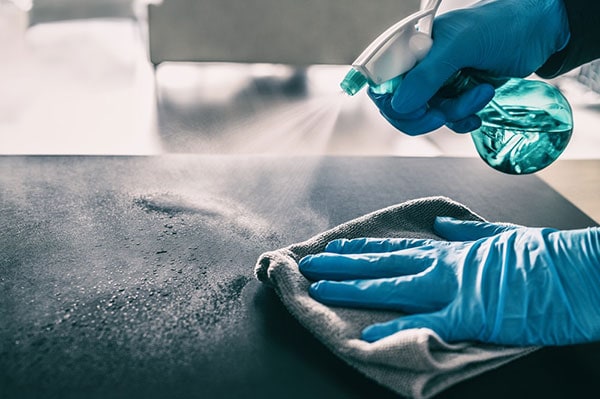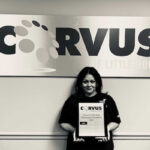Most people think of bleach in association with laundry. For decades, people have been using it to remove stains and keep white clothes looking their best, but bleach isn’t just useful for getting clothes clean. It can also act as a broad-spectrum bactericide.
In decades past, almost everyone used bleach to keep homes and businesses clean. It’s only recently that this versatile cleaning chemical has come under intense scrutiny.
It seems like everyone has a strong opinion. Some people still think of bleach as a wonder product, while others believe it to create an unacceptable chemical hazard. The problem with this debate is that the truth lies somewhere in the middle.
Understanding the Bleach Controversy
People who haven’t taken sides yet in the bleach debate often find themselves feeling confused. If bleach is an effective option for disinfecting surfaces, why isn’t everyone using it? On the other hand, if it truly poses a chemical hazard, why is it still sold alongside other janitorial supplies in grocery stores across the country?
The reason this controversy rages on is simple. Bleach is an effective bactericide, but it can also pose dangers to human health when it’s used incorrectly. More specifically, it can cause injuries when mixed with other cleaning products.
The Pros and Cons of Using Bleach
With the plethora of new, green cleaning solutions on today’s market, professional cleaners and homemakers alike have plenty of options. Some choose to continue using bleach because they already know it works, while others prefer to experiment with green cleaning solutions. The choice is largely a matter of personal preference, but it’s important for everyone to be informed about the pros and cons of using bleach.
The Benefits of Bleach
Bleach doesn’t just keep white clothes looking fresh and clean. It can also be used to disinfect many surfaces, from sealed granite countertops to trash cans. When used correctly, it poses no harm to humans or the environment.
This cleaning product is also affordable and versatile. Its uses range from keeping whites white in the laundry to cleaning hard, non-porous surfaces in kitchens and bathrooms. Some people even use bleach to clean their patios and stop diseases from overwintering on plant pots.
The Drawbacks of Bleach
The primary drawback of bleach is that if it’s used incorrectly, it can cause substantial harm to both people and the environment. Bleach should only be diluted with water, and it should never be mixed with other cleaning chemicals, especially ammonia. It’s also important to avoid combining bleach with products that include vinegar.
Bleach can also cause damage to certain surfaces and clothes that are not colorfast. People shouldn’t ever use it to remove stains or brighten the colors of clothes made from silk, leather, wool, or mohair and should check the label before using it on any other type of fabric. It’s also important to avoid using bleach on porous, wood-based materials.
The Different Kinds of Bleach
Not everyone realizes that there are three different kinds of bleach. It’s important to know the difference, though, because each of them is better suited for specific purposes. Here’s what you need to know about each type:
Chlorine Bleach
Chlorine bleach is the best-known variety. Its active ingredient is sodium hypochlorite, which is a powerful disinfectant and bactericide. Most chlorine bleach solutions must be diluted in water because this chemical can be strong.
The best use for chlorine bleach is in disinfecting surfaces. Some people also use it for removing fabric stains, but because of its strength, chlorine bleach is only appropriate for brightening white clothes, not removing stains on colored or patterned fabrics.
Unlike other types of cleaning products, chlorine bleach is also used in swimming pools. It’s relevant to note, however, that the chlorine products sold by pool maintenance companies contain a pre-diluted mixture of bleach and water. They can’t be replaced by simply dumping household bleach into the pool.
Oxygen Bleach
The second most popular type of bleach is oxygen bleach. Also referred to commercially as non-chlorine bleach, this product’s active ingredient is sodium percarbonate.
The primary advantage of oxygen bleach over its chlorine counterpart is that it’s safe for use on a wider variety of fabrics. As a result, it’s sometimes marketed as a color-safe or all-fabric product.
Oxygen bleach is also exceptionally eco-friendly. When it’s dissolved in water, the chemical reaction that occurs only produces nontoxic byproducts such as soda ash.
Reducing Bleach
Reducing bleach, also called reductive bleach, is the least popular of this class of cleaning chemicals. It’s used primarily to bleach materials like wood, cotton, wool, leather, and clay that can’t be treated using stronger concentrations.
The active compounds in most formulations of reducing bleach are sodium hydrosulfite and sodium dithionite. Because the uses for this type of bleach are limited to commercial manufacturing applications, it can be difficult to find reducing bleach in stores.
Safety Tips for Using Bleach
As noted above, bleach is a remarkably effective disinfectant, but it can pose safety hazards. When using bleach, people should take a few precautions. Depending on the application, best practices for using bleach can include:
- Wearing protective gear, including gloves and goggles when using strong concentrations of bleach.
- Wearing a respirator or mask if the application will produce hazardous vapors.
- Opening windows and doors to allow air to circulate when using household bleach.
- Never mixing bleach with any other kind of household cleaner to avoid producing harmful vapors.
Know When to Leave it to the Pros
Bleach is still commonly used in many commercial applications because professional cleaners know how to use it safely. If you want to have the cleanest space around but don’t want to risk exposure to toxic gas or don’t feel safe using heavy-duty cleaning chemicals, it’s best to work with a professional janitorial service.
The experts at Corvus Janitorial Systems know how to use a full range of cleaning chemicals safely and effectively to keep commercial spaces looking their best. We’ll always prioritize both worker safety and customer satisfaction and offer competitive prices, so don’t hesitate to get in touch and request a quote. Contact us today to learn more.













